Main Sponsors
-
 Reiso Pécs
Reiso Pécs -
 Hotel Lycium****
Hotel Lycium**** -
 Pécs ZOO
Pécs ZOO -
 http://www.mecsekegyesulet.hu/
http://www.mecsekegyesulet.hu/ -
Doro Ékszer
-
 Hetényi Pincészet
Hetényi Pincészet -
 Zsályaliget Élménypark
Zsályaliget Élménypark -
 Fabrik Barkács Szaküzlet
Fabrik Barkács Szaküzlet -
 Katica tanya
Katica tanya -
 E.ON Hungary
E.ON Hungary -
 http://www.ipark-pecs.hu/
http://www.ipark-pecs.hu/ -
 https://www.otpbank.hu/otpklub/Fooldal
https://www.otpbank.hu/otpklub/Fooldal -
 http://www.pecsibalett.hu/hindex.html
http://www.pecsibalett.hu/hindex.html -
 www.lakics.hu
www.lakics.hu -
 Gépszer
Gépszer -
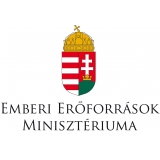 http://www.kormany.hu/hu/emberi-eroforrasok-miniszteriuma
http://www.kormany.hu/hu/emberi-eroforrasok-miniszteriuma -
 http://www.pnsz.hu/
http://www.pnsz.hu/ -
 http://www.pecs.hu/
http://www.pecs.hu/ -
 Mischl Autóház
Mischl Autóház -
 Öko-Trade Ltd
Öko-Trade Ltd -
 Bóly and Vicinity Savings Bank
Bóly and Vicinity Savings Bank -
 Mecsekerdő Forestry Ltd
Mecsekerdő Forestry Ltd -
 http://www.deltakarek.hu/
http://www.deltakarek.hu/ -
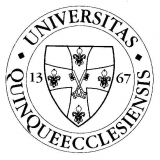 University of Pécs
University of Pécs -
 http://kloe.hu/
http://kloe.hu/ -
 http://www.lafarge.hu/
http://www.lafarge.hu/ -
 http://www.gondoldo.hu/
http://www.gondoldo.hu/

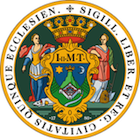
Stravinsky Marathon
7 Feb 2015. 12:30 | Béla Bartók National Concert Hall (Palace of Arts)
For Grown-Ups |
- Igor Sztravinszkij: Capriccio for Piano and Orchestra
- Igor Sztravinszkij: Psalm Symphony
Programme
Orchestra
Pannon Philharmonic OrchestraConductor
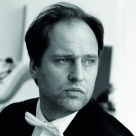
Tibor Bogányi
In 2017/2018, he is spending his seventh season as chief conductor of the Pannon Philharmonic.
Tibor Bogányi is of Hungarian descent and is regarded as the most interesting and talented member of the generation of Finnish conductors. At the age of 28 he was appointed Chief Conductor of… More
Soloist
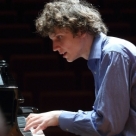
Zoltán Fejérvári
piano
Ticket Prices: 990 Ft
About the Programme
In 2015, the Budapest Festival Orchestra’s Marathon Series processes Igor Stravinsky’s works. The Pannon Philharmonic is an invited guest of the series, again; the orchestra will give a concert at the Béla Bartók National Concert Hall of the Palace of Arts at 12.30pm.
Stravinsky wrote the Capriccio for piano and orchestra between 1926 and 1929. The revised version of the work was drawn up in 1949. The virtuoso piece – like the piano concerto accompaniment by wind-instruments - belonged to the works, which, after the Russian Revolution assured the livelihood of the composer, forced to exile, in Western Europe. In the Capriccio, Stravinsky continued the easy voice of thelast movement of the Piano Concerto. The idea of the whole work sprouted from the final movement (Allegro capriccioso). Stravinsky's prior work was the ballet The Fairy's Kiss, of which music was composed from Tchaikovsky's transcripts. This gave Stravinsky the idea of writing a work which has the wit and charm that characterized Tchaikovsky, but without direct melody quotes. The brilliant rondo movement fully implements this idea: the virtuoso and the dance elements appear in fine neo-classical "seasoning". The end of the piece is so unexpected, as a punch line of a joke. The work premiere in December 1929, at the Salle Pleyel in Paris, was conducted by Ernest Ansermet, at the piano sat the composer himself. From the 1930s onwards, the composer often let the virtuoso piano solo to be played by his son, Soulima Stravinsky; and he conducted the work himself.
The commission of the Psalms ó Symphony began with the publisher’s standard proposal to write some popular things. I took his word - not as the publisher thought that "I would adapt the people's understanding ", but in the sense that "something universally admired"… (but a different and equally compelling reason was the desire to outdo all the many composers who have used these sublime poems for hanging onto them, like onto a hook, their lyrical, sentimental feelings)" said Stravinsky to Robert Crafton about the preparation of the Psalms.
The composer wrote the three -movement work for choir and orchestra for the fifty-year anniversary of the existence of the Boston Symphony Orchestra, in 1930. The world premiere took place not in Boston, but in Brussels, conducted by Ernest Ansermet, in December 1930. The festive Boston performance – under Serge Koussevitzky lead – was a week later. "The juxtaposition of the three psalms is not a coincidence - wrote Stravinsky. - The sinner’s begging for divine mercy (Prelude), thanks for the won mercy (Double Fugue) and the hymn of praise serve as foundations for the gradual work plan of the piece. The symphonic music, which vitalizes the lyrics, unfolds obeying the symphonic law. The three movements follow a periodic order; in this sense creating "symphony", as opposed to the suite with its pieces following one after the other without any system."
/www.bfz.hu/